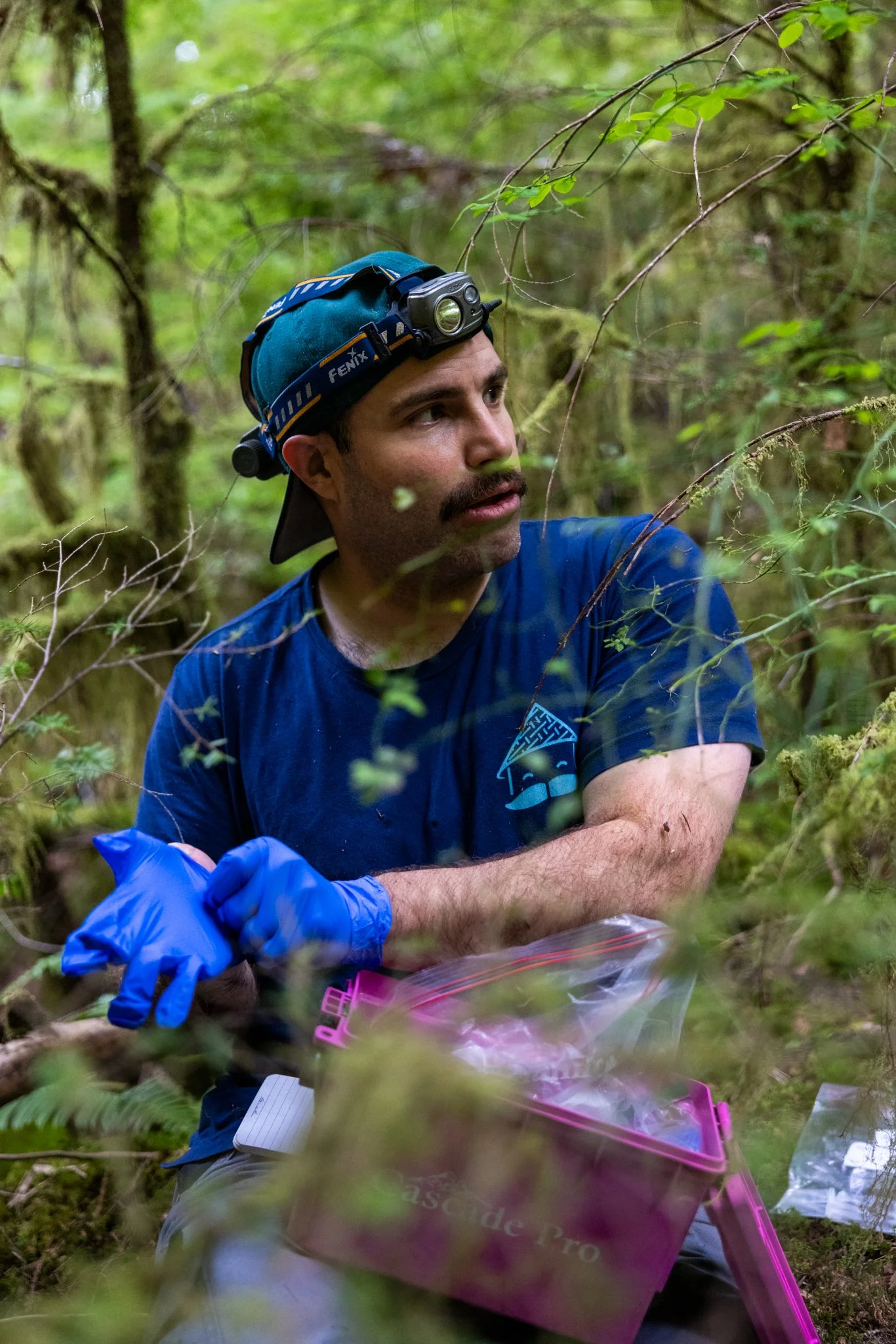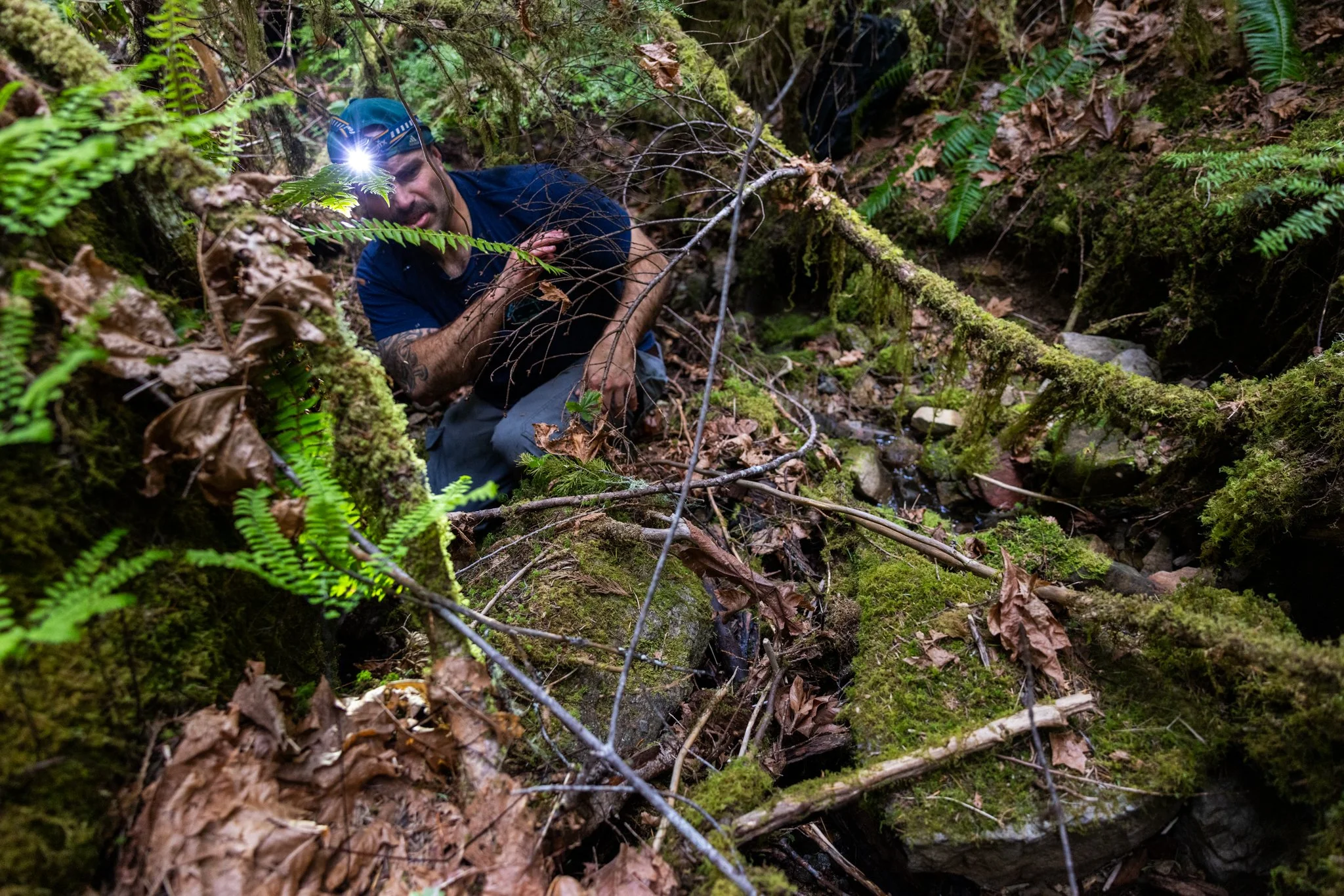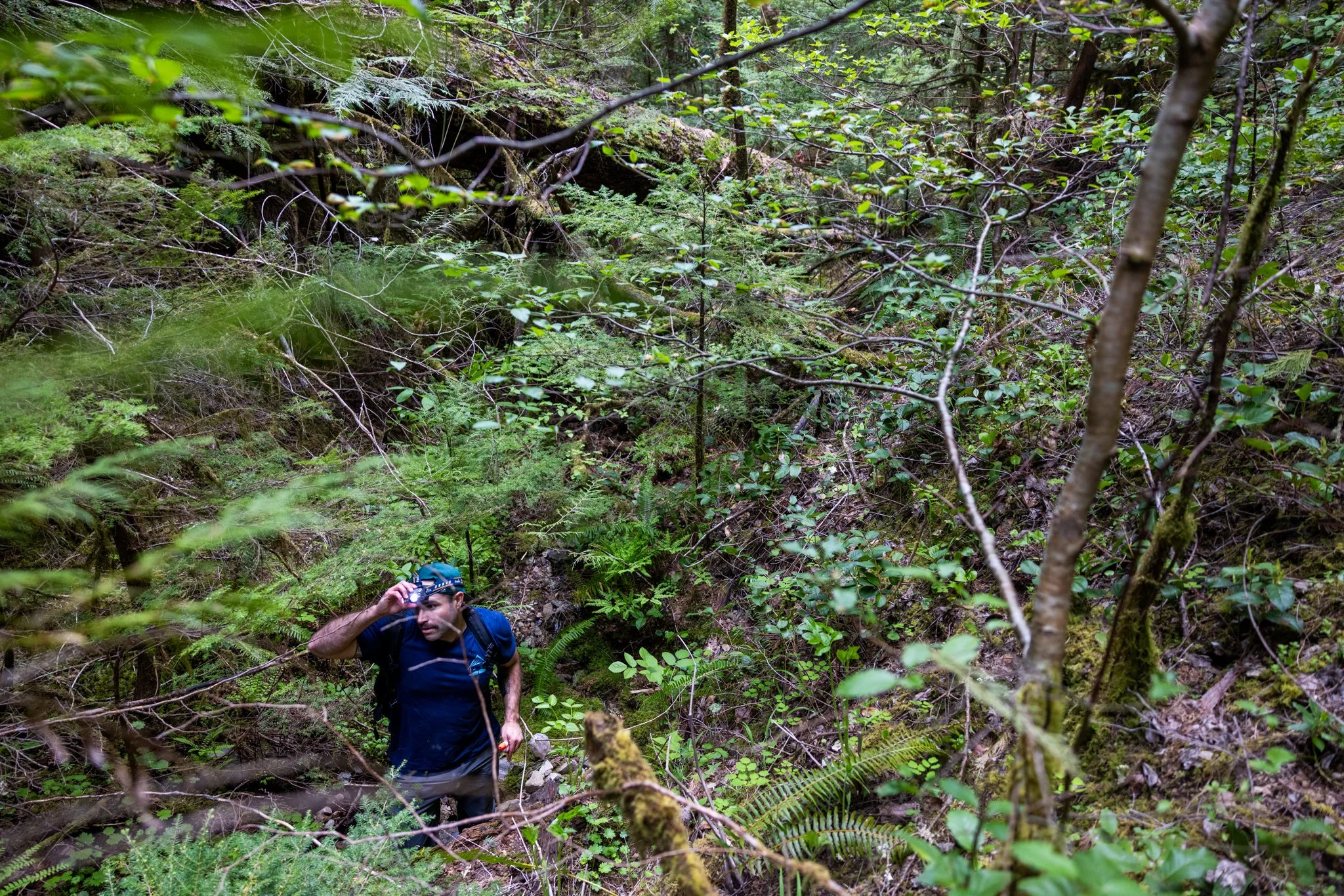
Chris Cousins, PhD candidate in the department of fish, wildlife and conservation sciences at Oregon State University, navigates a stream bed in search of cascade torrent salamanders in the H.J. Andrews Experimental Forest near Blue River, Oregon, May 7, 2025. Cousins is conducting a study to determine if the salamander should be listed as a federally endangered species, potentially increasing logging protections.
The cascade torrent salamander population, which inhabits the west slopes of the Cascade Mountains, is thought to be declining. According to Cousins, amphibians are the most threatened vertebrate group in the world, and salamanders are the most threatened among amphibians.
Cousins uses a predownloaded map to navigate between several sample sites a day. At each site, he hopes to capture several salamanders to collect the tips of their tails for genetic information.
Cousins uses his net to carefully catch the salamander which are highly susceptible to changes in temperature. Wildfires and more extreme swings in weather patterns due to climate change are a leading cause of major declines in salamander and amphibian populations around the world.
Cousins is trying to find out if and how many salamanders travel over ridges in between streams using genetic data. If he can show that they do, a federal endangerment listing could lead to increased logging protections. Cousins says the answer is not to stop logging entirely but to determine “where are the places you could log and it wouldn’t really impact the population’s long-term persistence.”
Cousins looks for the end of the headwater stream, which is home to the cascade torrent salamander. Due to the salamander’s sensitivity to changes in the environment, they are an indicator of larger environmental issues. Cousins, however, does not see being a bioindicator as a purpose for a species, and says their role in the ecosystem is what makes them valuable.
Cousins prepares to capture the one and only salamander of the day after several hours of careful searching. He says torrents are important ecologically because “they link streams and adjacent habitat in a way that you don’t normally see,” Cousins says, “they are a linkage between two systems.”
The torrent salamander species has existed for nearly 17 million years, making it significantly older than the formation of Mount Rainier and even human existence. Only now, are they a threatened species.
When asked what would happen if the salamander went extinct, Cousins says, “I don’t know . . . They’ve been here for so long. They’re really a part of [the landscape] in a way that’s difficult to quantify.” He does know that a lack of torrents would indicate a dramatic change in the ecology of these headwater streams, which collectively act as the source for the McKenzie River. There would be downstream effects, both literally and figuratively, Cousins says. “What those are? Who knows.”


















![When asked what would happen if the salamander went extinct, Cousins says, “I don’t know . . . They’ve been here for so long. They’re really a part of [the landscape] in a way that’s difficult to quantify.” He does know that a lack of torrents would](https://images.squarespace-cdn.com/content/v1/6019b343c3a95746b61ff19b/3d02306f-fcb2-488f-8e3d-81e1398715a1/20250507_SB_0553.jpg)